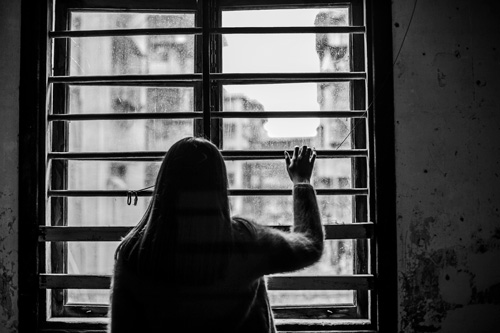
Winter blues have you down? Canadians are reminded every year just how far north we live when the winter months start getting colder and darker. While the days are finally starting to get a little bit longer now, many of us are still feeling pretty sluggish. It can be hard to focus and get through our busy days with so few hours of sunshine. The darkness and harsh weather might make you feel less than your best.
Seasonal Affective Disorder (SAD) is a kind of depression connected to the seasons. It usually happens during the winter time, but it can also happen during the summer. Scientists think it might be related to sun exposure but are still working to understand SAD better. Many people are prone to feeling the effects of the cold and dark months – feeling a little “blah” in January and February isn’t abnormal. But for some, changes in their mood, energy, and behaviour with the seasons are severe and could even get in the way of their daily life.
Seasonal Affective Disorder is characterized by changes in energy and mood related to a particular season. These symptoms improve in other seasons and will have happened for multiple years. Severe SAD is only diagnosed in 2-3% of the population. However, closer to 15% of Canadians experience milder versions of the mood disorder(1). If you think you could be affected, ask yourself if:
- I feel tired all the time, or have a hard time getting a good night’s sleep
- I’m having a hard time focusing or getting things done because I feel tired
- My appetite has changed (I crave more sugary and starchy foods)
- I have gained weight
- I’m irritable
- I feel sad, guilty, or “down”, or I feel hopeless
- I feel stressed or tense
- I’m avoiding people or activities that I used to enjoy
- I’ve lost interest in sex or physical contact
If you feel that any of these symptoms are getting in the way of your normal life, it’s a good idea to discuss your concerns with your doctor. Medical professionals can help diagnose your problems, which opens the door to many different treatment options. Your doctor could help you access treatments like light therapy, counseling, or medications. In addition, self-help methods can help you get back to your normal soon.
Taking Care of Your Body and Brain
 Taking care of yourself is important, whether you suffer from clinical Seasonal Affective Disorder or are just feeling down in the winter months. Your brain is a very important part of who you are. Anyone can focus on improving how they take care of their health. Self-help methods are one way that anyone can take care of their body and brain to feel more themselves. These steps can help anyone if done by themselves, or can be great tools if combined with professional medical help for diagnosed problems.
Taking care of yourself is important, whether you suffer from clinical Seasonal Affective Disorder or are just feeling down in the winter months. Your brain is a very important part of who you are. Anyone can focus on improving how they take care of their health. Self-help methods are one way that anyone can take care of their body and brain to feel more themselves. These steps can help anyone if done by themselves, or can be great tools if combined with professional medical help for diagnosed problems.
Some easy things that you can try to help boost your energy and mood include:
- Spending some time outside, especially during the day when the sun is out
- Trying to maximize sun exposure in your indoor spaces. Try opening your blinds or organizing your workspace to have better exposure to the sun
- Allow more sun into your home by trimming trees and hedges that are in the way
- Install skylights or use lamps designed to mimic sun exposure
- Build physical exercise into your routine. This could be as simple as a brisk walk at lunch
- Stay hydrated by drinking more water, and try to limit caffeine intake
- Watch what you eat. Resist cravings for sugar and carbs. Instead, try to make healthier food choices for longer lasting energy
- Establish a healthy sleep schedule. You want to be well rested, but avoid the temptations of naps and oversleeping
SAD and the regular winter blues are relatively common, but they don’t have to take over your life. If you are not feeling yourself in the winter, there are many types of help available. Anyone can take advantage of a wide assortment of help to find a care plan that works for them.